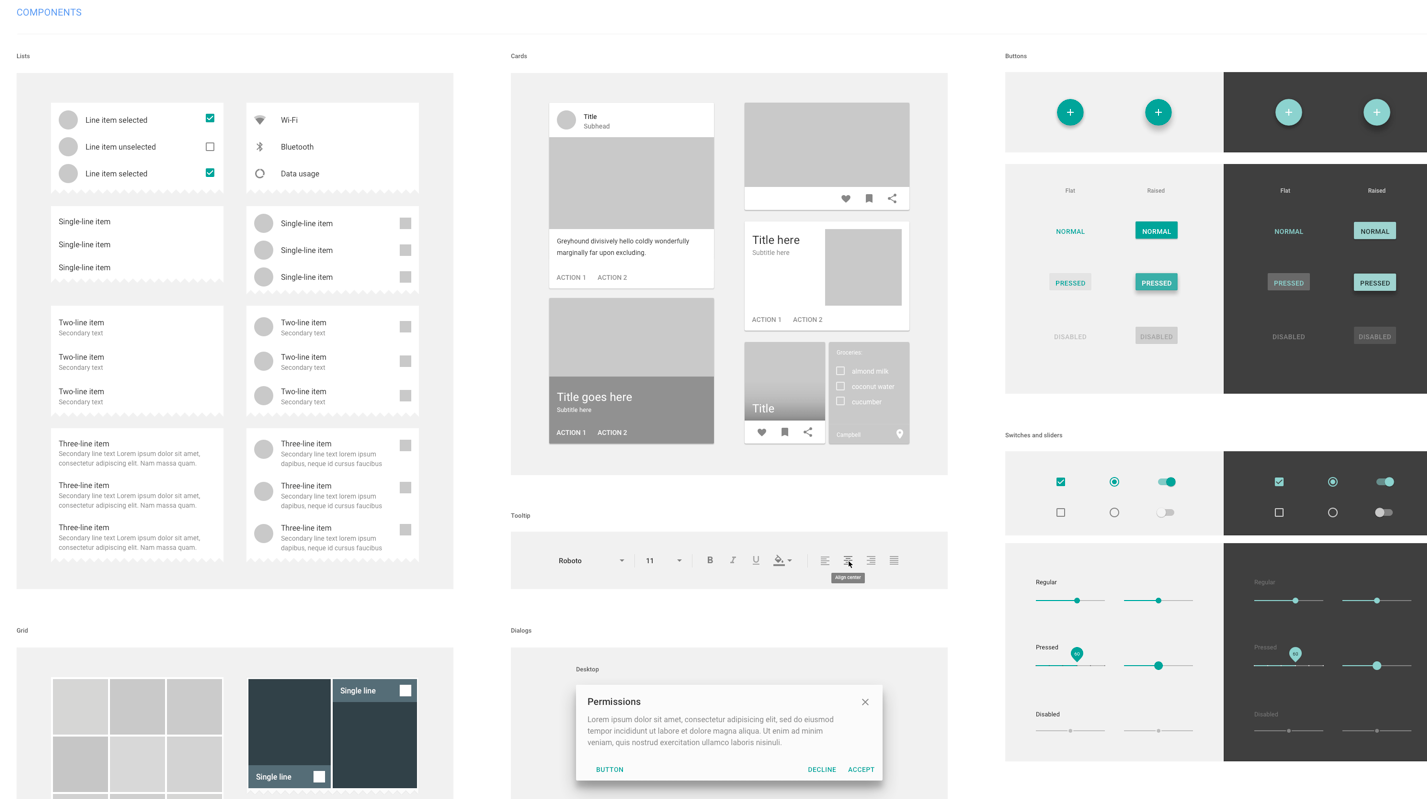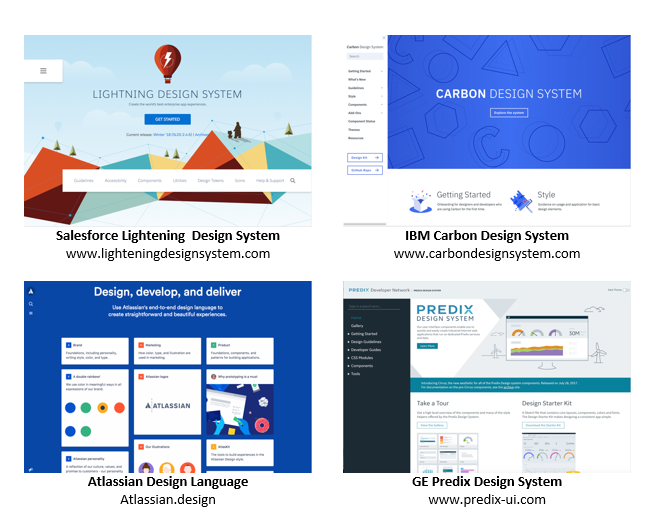Design systems create a consistent, expected user experience across all applications. Learn what they are and why you should invest in them.
Companies are increasingly focusing on design and user experience resources on improving not just their customer-facing digital products, but also their internal-facing systems.
In this enterprise space, employees expect and deserve internally consumed products that have the same design and UX quality that external customers have come to expect.
To be frank, having a stunning user experience matters to anyone using your systems, no matter what their role. Systems that lack a good user experience cost your company a lot of time – seen as productivity – and money.
What do you do when you have dozens of apps within your enterprise that all are developed by different teams and look exceedingly different from application to application? They may all have your company’s logo and brand colors, but their interfaces and experiences are divergent from each other.
You can tell yourself that each of the systems has a different user base. System X is for the Finance group, System Y is for Sales, and System Z is for Operations. So, you convince yourself you don’t need a consistent experience for them since different people use each of the systems.
You can keep telling yourself that, but from 20-plus years of experience in user research within enterprise client organizations, I can tell you that it is not the case. As companies try to improve collaboration and have their employees take on increasingly diverse workloads, people will use a variety of systems throughout the enterprise that is not specific to their job functions.
Do You Need Design Systems?
The need exists to create a shared and consistent experience for this plethora of applications used by your employees. It’s important that the experience is easily learnable and doesn’t take up a significant portion of the development time while these applications are being built.
This is all happening while companies are trying to decrease development costs and time to market of internal systems. With that in mind, there are a couple of options:
- Increase development staff
- Design Faster
- Design solutions that solve multiple problems
Hiring more people can help with issues around time to market, but throwing more people at the problem, rarely works. Moreover, designing faster usually means cutting corners, which leads to less than ideal design solutions – including one-off solutions that become increasingly difficult to maintain over time.
So, the only real choice is to create solutions that solve problems for multiple applications.
Enter: Design Systems.
What Are Design Systems?
Design Systems are a collection of reusable components, driven by a set of clear and concise principles and guidelines that can be combined to construct any number of applications.
Unlike a style guide, which traditionally has brand elements, such as logo usage, typography, colors and the like, design systems usually have all the elements of a style guide, but also a comprehensive set of UI components, both as design elements and typically as front-end code.
Think Legos® for your design and development process.
Having a comprehensive design system allows organizations to:
- Focus the work of Designers on innovation instead of production.
- Speed up development by utilizing a set of componentized and tested front-end code.
- Decrease onboarding time for new designers and developers, key in high growth organizations.
- Increase product development inertia, because the focus can be on what the application does vs. how it functions.
- Allow Product Managers or Business Analysts to mockup screens, without the help of designers, using approved design components.
Most importantly, once rolled out enterprise-wide, design systems create a consistent and expected user experience across all applications.
Wait, Aren’t These Just Style Guides?
Unlike style guides, Design Systems are “living things.” They are not a PDF file that gets created and referenced occasionally. Most are usually documented using a website that is continuously updated and maintained with the latest component updates.
Design Systems are a product to make your product development process easier. Many large organizations utilizing Design Systems even have one or more product managers whose primary role is to manage the development and maintenance of the design system.
Enterprise-level Design Systems are not just for consumer-facing websites and applications, they are being used by some of the most innovative companies in the world, including:
Top Reasons to Invest in Building a Design System
As your application portfolio grows, complexity creeps in. A design system can help solve many of the challenges organizations have around internally created applications, including:
Designing Smarter, and Faster
Your organization may not have a dedicated design team or it may have a small, overworked design team. You are not alone. I have managed design teams made up of four people up to 160 people, and even when I had a large team, we were still strained for resources and our output couldn’t keep up with demand.
By utilizing a design system, your design team can focus on strategic design challenges vs. tactical one-off design solutions. Even if your organization does not have a dedicated design team, a design system can help streamline the design process and produce more work with less staff.
Reducing Design and Technical Debt
As applications age and go through iterations, they acquire debt. Technical debt with larger and more bloated code bases – and design debt. When strategic design decisions are deferred, it can lead to one-off creative solutions and design for the short-term.
This debt manifests itself in inconsistent styles and interactions, interfaces disconnected from design principles, and scoop creep, among many others.
Design systems help keep design and technical debt in check by eliminating short-term design decisions and decreasing design and development overhead, allowing your teams to focus on innovation instead of maintenance.
Reducing Confusion and Inconsistency
Inconsistent user experiences lead to confused users. By creating standardized components and workflows, we can create more predictable and comprehensible experiences for users as they move from one application to another within your application portfolio.
This consistency leads to increased user success and satisfaction.
Prototype Faster
Instead of creating new features and experiences from scratch, designers can pull components from a design system and more rapidly create and test new features.
Having all the LEGOs available doesn’t make you less creative. It allows you to quickly build many things. It allows you to more quickly build the masterpiece.
“Fail faster. Succeed sooner.” – David Kelley, IDEO
Iterate Faster
Teams can move faster when they have the code already available and the design components easily accessible with a few lines of code.
This makes iteration and experimentation simple and pain-free.
“A good idea is worthless without impeccable execution and a commitment to iterate.” – Zach Klien, Co-founder, VIMEO
Improve Usability
Applications using design systems benefit from improved usability because they have a consistent experience throughout. This consistency leads to decreased problems, friction points and cognitive overload when using complex applications.
The consistency of experience driven by using a set of tested and validated components means less complexity and fewer problems further down the development process.
Top 3 Design System Myths
- Our applications are so different from one another. We can’t standardize.
I hear this a lot. Your applications are not unique snowflakes. While the usage of the variety of applications in your enterprise portfolio may be unique, the user base and more importantly the interaction patterns, are not.
Why should you treat how you handle a set of radio buttons differently in two different applications? Create the pattern once and reuse it throughout all the apps you are building. Focus on the design principles, and the component level designs and consistency will happen.
Having a consistent enterprise user experience is a marathon, not a race.
- We already have so many applications, and we can’t go back and redesign them all.
No company is starting from scratch with their internal-built applications. By the time you realize you need a design system, you are already up to your neck in UX consistency and product development problems.
No one ever says, “Hey, we are building our first application, let’s build a complex design system around it.”
The best way to start a system-driven design culture is to draw a line in the sand, and begin. From this point moving forward, all new applications will utilize the design system.
Then as you update and maintain old systems, you slowly move the existing systems closer the design principles and design language of the design system. In fact, many companies who implement Design Systems, find that there is a solid business case a few months later to go back and update existing applications to utilize the Design System.
I recently worked on a ten-year-old set of applications that were so inconsistent, and the new apps were so praised by the new user experience in the new applications vs. the older ones, that we embarked on a nine-month long process to revamp the entire suite of applications.
The business case was straightforward. It was driven by user feedback to the new UI.
- Our Designers won’t have the ability to be creative and will leave.
This is one I thought was a truth when I first started exploring Design Systems a few years ago. I felt that if designers have to follow guidelines and primarily use a series of very constraint components, they would hate their jobs, and not feel like they are given any creative freedom at all.
After some exploration and through some “user research” talking with designers whom I managed, I found that they hate doing production work that is needed for the development team. The things that keep good designers engaged and happy is when they get to innovate.
By utilizing a design system, organizations can speed up the production process and allow designers to do what they do best, ideation on new features and functionality, instead of providing the design for another screen with common form elements for the development team.
Companies like Airbnb have used Design Systems like seen below to jump-start their innovation programs.
Conclusion
Building a design system that will be appropriately utilized by your entire organization is a lot of work, and I did not even talk about the politics and governance of doing so, which we will cover in a future post.
However, the rewards outweigh the organizational challenges in doing so. You just have to remember: The best strategy is a crawl/walk/run.
Do not try to change the world immediately. Focus on what is right in front of you and solve for that, while considering the future needs.
Resources
While Design Systems are new to many organizations, there have been some very innovative thinking by leading design minds, over the past few months.
Here are a few interesting resources on getting started:
- Promoting a Design System Across Your Products from A List Apart
- Selling a Design System at Your Company from UXDesign.cc
- Design Systems vs.Pattern Libraries vs. Style Guides – What’s the Difference? from UXPin
- The Way We Build from Airbnb Design
- What is a Design Language…really? from Adobe
- Atomic Design from Brad Frost
- Design Systems from Smashing Magazine



